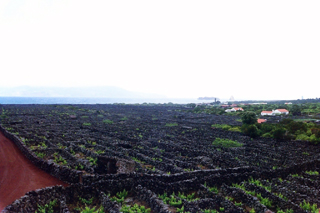In the Fifteenth Century, in order to attract settlers and increase the economic profitability of the obscure Azorean territory, the crown granted land under the sesmarias regimen. Thus, the distribution of properties to all who would cultivate them for a period of five years, presupposed lifelong ownership of the land at the end of the quinquennium, given positive results. Sesmarias land granting was based on the orography of each island. Generally, the lowland coastal plots were chosen for cultivation; middle areas were reserved for pastures, and highland areas were used for the development of woodlands.
As the population grew and it was impossible to increase the area of arable land, two distinct developments occurred. First, in the most fertile and most populous islands, Terceira and São Miguel, the contours of the implementation of the land granting system, which were not clearly discernible, remained in place until the Eighteenth Century. In São Miguel, particularly, this factor led to intense social polarization, resulting in considerable poverty for some segments of the population, such as stipended agricultural workers. These pockets of destitution would remain in place into the Modern Age. The second development was noticeable in islands with smaller geographical dimensions or with reduced soil fertility. In these islands, the land which had assured the subsistence of diverse family nuclei (though not in a continuous fashion) was subdivided into multiple parcels, as promoted by the organizational policies for the territory. Repeated volcanic eruptions and rudimentary agricultural techniques as well as unscientific uses of fertilization procedures rendered agricultural production dependent on climatic conditions and on the forces of nature, hindering the development of a stable agricultural practice.
Beyond subsistence agriculture, however, early on the archipelago was requisitioned to satisfy the various needs of the Portuguese kingdom and of its overseas empire. To meet this requirement, the Azores islands functioned as sites of agricultural experimentation. The focus on responding to outside demands motivated the cultivation of various products, such as wheat and woad (between the Sixteenth and the Seventeenth Centuries), wine (during the Seventeenth and Eighteenth Centuries), and tobacco and oranges (in the Nineteenth Century). These commodities exemplify the Azorean effort for redefinition in the economic arena, which aimed at strengthening market access for Azorean agricultural products.
Nevertheless, the growth of the archipelago´s population, which counted approximately one hundred and forty-three thousand (143,000) inhabitants in the Eighteenth Century, and the atrophying of the primary sector were increasingly worrisome factors to the central political authorities. Therefore, agricultural reform was perceived to be necessary. The effort of reforming the archipelago´s agricultural practices was led by the Marquis of Pombal. The reform promoted the invigoration of agricultural development in properties that had been left uncultivated and a reduction in the number of granted properties, enjoining the revocation of the grant for all the properties with incomes below one thousand (1,000) reis, as determined by law on September 9, 1769.
Despite the political efforts, the Azorean economy was vastly dependent on the primary sector and experienced great difficulty in growing. Comprised almost solely of crafstmen and domestic workers, the precarious secondary sector was unable to compete in the broader economic arena, and the frail tertiary sector was barely represented in the islands´ few urban areas. These factors presented nearly unsurmountable obstacles to economic progress. The Azorean economy would remain essentially unchanged into the mid-Twentieth Century. Gaining particular relevance in the Twentieth Century, emigration clearly reflected the economic fragility of the archipelago.
Bibliography:
AAVV, História dos Açores. Do descobrimento ao século XX, direcção científica de Artur Teodoro de Matos, Avelino de Freitas de Meneses e José Guilherme Reis Leite, Angra do Heroísmo, Instituto Açoriano de Cultura, 2008, três volumes. COSTA, Susana Goulart, Açores: Nove Ilhas, Uma História / Azores: Nine Islands, One History, Berkeley, University of California, 2008.
Translated by: Maria João Pimentel
